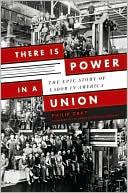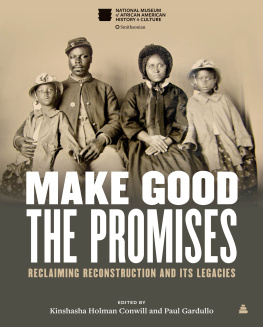HOUGHTON MIFFLIN COMPANY
BOSTON NEW YORK
2008
Copyright 2008 by Philip Dray
ALL RIGHTS RESERVED
For information about permission to reproduce selections
from this book, write to Permissions, Houghton Mifflin Company,
215 Park Avenue South, New York, New York 10003.
www.houghtonmifflinbooks.com
Library of Congress Cataloging-in-Publication Data
Dray, Philip.
Capitol men : the epic story of Reconstruction through the lives of the first
Black congressmen / Philip Dray.
p. cm.
Includes bibliographical references and index.
ISBN 978-0-618-56370-8
1. Reconstruction (U.S. history, 18651877) 2. African American legislators
Biography. 3. United States. Congress. HouseBiography. 4. Social justice
United StatesHistory19th century. 5. United StatesRace relations
Political aspectsHistory19th century. 6. Southern StatesRace relations
Political aspectsHistory19th century. 7. United StatesPolitics and
government18651900. 8. Southern StatesPolitics and government
18651950. I. Title.
E 668 .D 76 2008
973.8'1dc22 2008011292
Book design by Melissa Lotfy
Printed in the United States of America
DOC 10 9 8 7 6 5 4 3 2 1
The photographs, lithographs, and Thomas Nast cartoons on pages 9, 20, 38,
54, 60, 62, 69, 83, 95, 105, 120, 126, 152, 164, 183, 194, 244, 256, 296, 301, 308, 328,
335, 360, and 370 appear courtesy of the Library of Congress Prints and Photographs
Division Online Catalog. The Nast cartoon on page 27 was provided
by the American Social History Project/Center for Media and Learning at
the Graduate Center of the City University of New York. The portrait of
Blanche K. Bruce on page 206 is from the Blanche K. Bruce Papers, Moorland-Spingarn
Research Center, Howard University. The illustrations on pages 41
and 218 are from Men of Mark: Eminent, Progressive, and Rising, by William J.
Simmons, published by George M. Rewell (Publisher) Cleveland, 1887, and
those on pages 4, 7, 21, 50, 156, 187, 250, and 293 are from the Picture Collection
of the New York Public Library. Posters reproduced on pages 239 and 290 are
in the author's collection.
One of the surprising results of the Reconstruction period was that there should spring from among the members of a race that had been held so long in slavery, so large a number of shrewd, resolute, resourceful, and even brilliant men, who became, during this brief period of storms and stress, the political leaders of the newly enfranchised race.
BOOKER T. WASHINGTON
Some men are born great, some achieve greatness, and others lived during the Reconstruction period.
PAUL LAURENCE DUNBAR
CONTENTS
Preface ix
BOAT THIEF
A NEW KIND OF NATION
DADDY CAIN
" THE WHIRLIGIG OF TIME "
KUKLUXERY
PINCH
THE COLFAX MASSACRE
CAPSTONE OF THE RECONSTRUCTED REPUBLIC
DIVIDED TIME
THE ETERNAL FITNESS OF THINGS
BLACK THURSDAY
A DUAL HOUSE
EXODUSTING
A ROPE OF SAND
" THE NEGROES' FAREWELL " 333
EPILOGUE
Acknowledgments
Notes
Bibliography
Index
PREFACE
O F ALL THE IMAGES of long-ago America, perhaps few are as poignant as the Currier & Ives lithograph from 1872 depicting the first seven black members of the U.S. Congress. From the midst of Reconstruction, one of the most precarious times in our nation's history, they gaze out confidently in their neatly trimmed beards, vested suits, and ties, indistinguishable, except for their color, from their white counterparts. The portrait, showing Hiram Revels of Mississippi; Benjamin Turner of Alabama; Jefferson Long of Georgia; Robert De Large, Robert Brown Elliott, and Joseph H. Rainey of South Carolina; and Josiah Walls of Florida was a proud symbol of the liberation of America's newest citizens, proof of the tremendous social revolution the Civil War had wrought.
The picture was considered an object of scorn among many Southern whites, however, who refused to countenance the sudden transformation of slaves into holders of public office. Emancipation, and then the appearance of black federal troops in the conquered South, had been offense enough; when, under the terms of congressional Reconstruction, men of color began to vote, win elections, and wield political authority, the patience of Southerners was pushed to its limit. "The North thinks the Southern people are especially angry because of the loss of slave property," wrote the North Carolina Unionist Albion Tourgee. "In truth, they are a thousand times more exasperated by the elevation of the free negro to equal political power." As the Virginian George Mason railed, "The noble Caucasian, in whose very look and gait the God of creation has stamped a blazing superiority, [must] bow down to and be governed by the sable African, upon whom the same God has put the ineffaceable mark of inferiority! A more flagrant desecration of the representative principle ... is not to be found in the annals of the human race."
Faded prints of the engraving still hung in modest sharecroppers' cabins when researchers from the Works Project Administration visited the Southern Black Belt in the 1930s. The men in the picture were by that time largely forgotten, and the image, and others like it, had become historical curiosities. In the 1870s, the states that had sent the "colored representatives" to Congress were themselves roiled by violent factionalism, undermining what legitimacy these men had in Washington, as the nation backed away from the ideals of Reconstruction. In 1901, resolutions of thanksgiving would be passed in the North Carolina legislature when George H. White, the sole remaining black member of the U.S. House of Representatives, finished his term in office. By then black Southerners had been virtually expunged from politics, even as voters; the greater part of a century would pass before another elected representative of color from a Southern state arrived on Capitol Hill.
Reconstruction was initially a hopeful time. America, emerging from civil war, attempted to reinvent itself. A broadened concept of citizenship was introduced, as were new guarantees of equal treatment under law, commitment to public education and public welfare, efforts to redistribute land, and more equitable methods of taxation. Laws and constitutional amendments were forged to improve upon the vision of the country's founders; new government agencies were formed, such as the Freedmen's Bureau, which assisted the recently freed slaves, and the Justice Department, which helped enforce their new rights. This effort rode on the leadership of resolute national legislators and the actions of countless individuals, organizations, and missionaries, but also on the determination of the freed slaves themselves, four million strong, who grasped the long-awaited chance to steer their own destiny.
But despite this earnest struggle, Reconstruction in the end could overcome neither the resistance of the South, where its innovations had their most meaningful impact, nor the North's mounting apathy and desire for sectional reconciliation. Redemption, or home rule, as it was often called, came to the South, and Reconstruction was denounced as a fatal example of governmental hubris and overreaching. History and popular culture for decades characterized it as an atrocious failure.
The South, it was held, had been punished too cruelly for seccessionits attempted act of self-determination. Its leaders had been humiliated and its people victimized in a grotesque experiment that elevated former slaves to citizenship, placing whites "under the splay foot of the Negro." Vindictive Northerners had been not only hypocrites, in trying to script how others might coexist with a restive, dangerous black minority, but also fools to think they understood the racial dynamics of Southern life. The myth of the Southland redeemed from Reconstruction's errant policies would become a fixture of American memory, retold in countless memoirs, articles, and works of history, from the 1874 appearance of
Next page









